Cooking is an essential part of life, but the cookware used to prepare meals can make or break a culinary experience. Clean hard anodized cookware is the ultimate choice for busy cooks who want to make delicious meals with minimal effort. This is made from aluminum that has been subjected to an electrochemical process that makes it harder and more durable than regular aluminum pots and pans.
What Is Hard Anodized Cookware?

Hard anodized cookware is a type of cookware made from aluminum that has been treated with an electrochemical process. This process creates a harder, thicker layer of aluminum oxide on the surface of the pan which makes it more durable and resistant to corrosion and scratching. The hard anodized coating also helps to distribute heat more evenly than traditional aluminum pans, making it ideal for cooking delicate dishes such as eggs or sauces. Additionally, This is non-toxic and non-reactive, so it won’t leach any harmful chemicals into your food. It’s also easy to clean with just soap and water, making it a great choice for busy cooks who don’t have time for complicated maintenance.
What Are The Benefits Of Hard-Anodized Cookware?
Hard-anodized cookware has many benefits that make it a great choice for home chefs.
First, it is incredibly durable. The hard-anodizing process creates a strong layer of aluminum oxide on the surface of the cookware that is harder than stainless steel and highly resistant to scratches and dents. This makes it ideal for everyday use and long-term durability.
Second, it is extremely non-stick. The anodizing process also creates a non-porous surface that prevents food from sticking to the pan, making cooking easier and cleanup a breeze. Additionally, because there are no toxins or chemicals used in the hard-anodizing process, you don’t have to worry about any of those substances leaching into your food while you cook.
Finally, This is relatively lightweight compared to other types of metal cookware like stainless steel or cast iron.
The Warnings About Hard Anodized Cookware Before We Get Started
Hard anodized cookware is a popular choice for many cooks due to its non-stick properties, even heat distribution, and durability. However, there are some warnings that should be taken into consideration before using this type of cookware.
Firstly, solid anodized cookware should never be used with metal utensils as they can scratch the surface. This can cause food particles to become trapped in the scratches which can lead to bacteria growth and contamination. It is best to use plastic or wooden utensils when cooking with hard anodized cookware.
Secondly, it is important not to preheat the pan before adding oil or butter as this can cause the pan to warp or discolor over time. Additionally, It should not be cleaned in the dishwasher as this can also cause damage and discoloration. Instead, hand washing with warm soapy water is recommended.
Remove Stubborn Stains And Discoloration
Removing stubborn stains and discoloration can be a daunting task, especially when it comes to delicate fabrics or surfaces. Whether it’s an old wine stain on your favorite shirt or a rust mark on your bathtub, these blemishes can make even the cleanest of spaces look dingy and uninviting. Fortunately, there are several tried-and-tested methods for removing stubborn stains that won’t damage your belongings.
1. Before Use
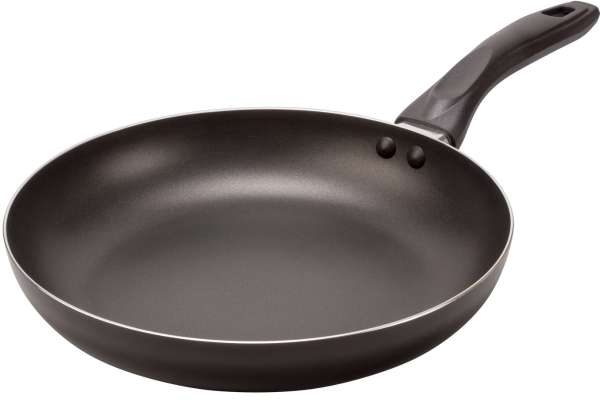
Before using any product, it is important to ensure that the surface or area where it will apply is free from stubborn stains and discoloration. This step can make a huge difference in the effectiveness of the product and how long it lasts. Removing these blemishes ensures that the product can penetrate deeply and evenly.
There are several ways to remove stubborn stains and discoloration from surfaces. One effective method is by scrubbing with a mixture of baking soda, salt, and vinegar. This combination works wonders on tough stains like coffee or red wine that have leave unattended for too long.
2. While Cooking

While cooking, it is common for stains and discolorations to occur on kitchen surfaces. These can cause by spills from food, drinks, or even condiments. Stubborn stains and discoloration can leave a bad impression on the cleanliness of your kitchen.
To remove stubborn stains and discoloration from your kitchen surfaces, there are various methods you can use. One way is to create a paste using baking soda and water. Apply the paste onto the affected area and let it sit for around 10 minutes before wiping it away with a damp cloth.
Another effective method is to use lemon juice or vinegar. Both of these contain natural acids that have bleaching properties that can help remove stubborn stains and discoloration. Simply apply the juice or vinegar onto the affected area and let it sit for a few minutes before wiping it away with a damp cloth.
3. After Use
One effective way to remove stubborn stains is by using a mixture of vinegar and baking soda. Simply mix equal parts of vinegar and baking soda into a paste, apply it to the stain, let it sit for a few minutes, then scrub away with a brush or cloth. For tougher stains like red wine or coffee spills on carpets or upholstery, consider using specialized cleaning products that design for these types of stains.
4. Cleaning The Interior
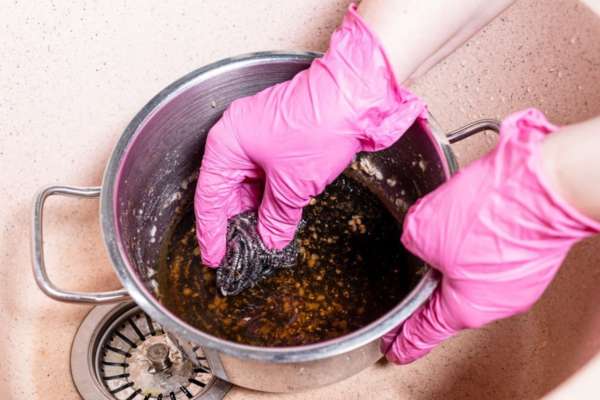
Cleaning the interior of our homes is a task that we all need to take seriously. It is important to ensure that our living spaces are clean, hygienic, and free from any harmful bacteria. However, removing stubborn stains and discoloration can be quite challenging for many people.
One of the most effective ways to remove stubborn stains and discoloration from your interior surfaces is by using natural cleaning products. These products are not only safe but also very effective in getting rid of dirt, grime, and other contaminants. Some examples of natural cleaning products include vinegar, baking soda, lemon juice, and hydrogen peroxide.
Another great way to remove stubborn stains is by using steam cleaning machines. These machines use hot water vapor to loosen dirt particles which makes them much easier to remove.
5. Cleaning The Exterior
Cleaning the exterior of your home can a daunting task, especially if it has been neglect for some time. However, with the right tools and techniques, removing stubborn stains and discoloration from your house’s exterior can be a breeze. Here are some tips to get started.
Firstly, identify the type of stain or discoloration you are dealing with before selecting a cleaning solution. For instance, mold and mildew require different treatments than oil or grease stains. Once you have identified the type of stain, choose an appropriate cleaning solution that will help remove it effectively.
Secondly, always wear protective gear such as gloves and safety goggles when working with cleaning solutions to avoid any harm to your skin or eyes. It is also important to test any cleaning solution on a small area first before applying it to the entire surface.
6. Clean The Bottom
Cleaning the bottom of a surface can a daunting task, especially if it’s cover in stubborn stains and discoloration. However, with the right tools and techniques, you can effectively remove these blemishes and restore your surface to its former glory. Whether it’s the bottom of your pool or the underside of a boat, there are several steps you can take to clean even the toughest stains.
Firstly, start by removing any debris that may be on the surface using a brush or vacuum cleaner. This will help you get a clear view of what you’re dealing with and make it easier to target specific areas. Then, use an appropriate cleaning solution depending on the type of stain you’re dealing with. For example, bleach may work well for algae stains while vinegar is more effective against hard water deposits.
Things You Will Need
- Hot Water
- Dish soap
- Baking soda
- cleaners
- Tartar
- Vinegar
- scrubbers
- Towel
Choose Your Products Carefully
Choosing the right products to remove stubborn stains and discoloration is crucial. With so many options available in the market, it can be overwhelming and confusing to decide what works best for your specific needs. However, making an informed decision can save you both time and money in the long run.
Before purchasing any product, it’s essential to know what type of stain or discoloration you’re dealing with. Different products work better for different types of stains such as coffee, red wine, grass, or grease. It’s also important to consider the surface you’re cleaning- some products may damage delicate surfaces like silk or leather.
Clean Your Cookware

Maintaining your cookware is an essential part of keeping your kitchen clean and hygienic. Over time, cooking oils, food residues, and stains can accumulate on the surface of your pots, pans, and baking sheets. If left uncleaned, these particles can harbor harmful bacteria that can affect the taste and quality of your food.
To keep your cookware in top condition, it’s important to clean them after every use. Start by removing any excess food debris using a soft-bristled brush or sponge. Avoid using harsh abrasives or steel wool as they can scratch the surface of your cookware.
For baked-on grease or stubborn stains, you may need to resort to more heavy-duty cleaning methods such as soaking the cookware in hot soapy water or using specialized cleaners designed for specific types of materials such as stainless steel or cast iron.
Use The Right Cleaning Methods
Methods1. Hot Water
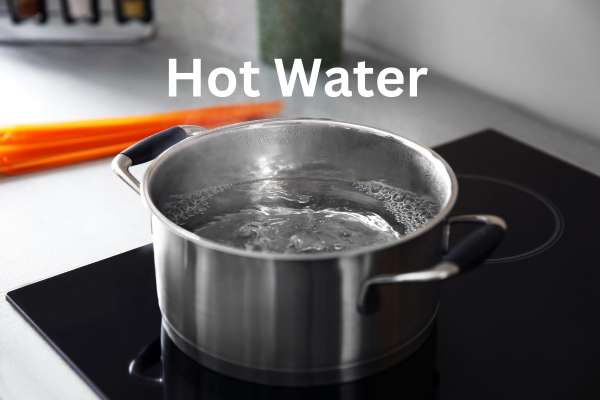
Hot water is one of the simplest and most effective clean methods for anodized cookware. This type of cookware has been treated with a protective layer that makes it resistant to scratches, stains, and corrosion. However, like any kitchen utensil, It can accumulate grease, grime, and food residues that need to remove before being use again.
Methods2. Dish Soap
Dish soap a crucial household item use for clean a variety of dishes, including anodized cookware. This is made from aluminum that has been treated with an electrochemical process, making it harder and more durable than regular aluminum. However, cleaning cookware can be tricky as harsh chemicals or abrasive scrubbers can damage the surface. Here are some effective clean methods to ensure your anodized cookware remains in top condition.
Methods3. Baking Soda

Baking soda is one of the most versatile household items that can use for various purposes. One of its significant uses is in clean anodized cookware. Anodized cookware is made from aluminum and has been treated to make it more durable and resistant to scratches and corrosion. However, this type of cookware requires specialized cleaning methods, which baking soda provides.
Methods4. Cleaners
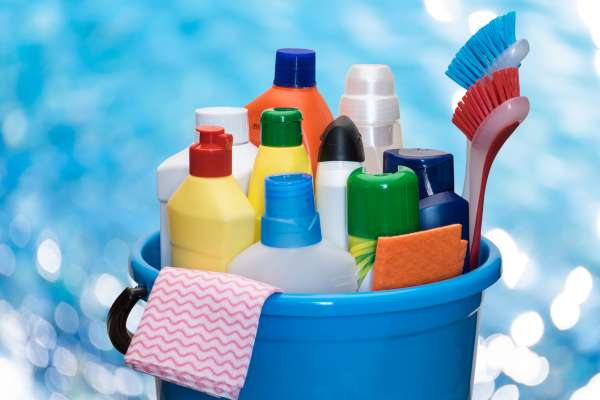
One popular method for clean anodized cookware is using baking soda and water. Simply mix a tablespoon of baking soda with enough water to create a paste, then apply it to the surface of your cookware using a soft cloth or sponge. Rub gently in circular motions, then rinse thoroughly with water and dry completely before storing. This method is ideal for removing stubborn stains and discoloration from your anodized cookware without damaging the surface layer.
Methods5. Tartar
Tartar is a stubborn yellowish or brownish deposit that forms on the surface of teeth due to poor oral hygiene. While it may seem harmless, tartar buildup can lead to tooth decay, gum disease, and bad breath. However, with proper cleaning methods and tools, you can easily remove tartar from your teeth and prevent its formation.
One effective way to remove tartar is by using an electric toothbrush with a round brush head. These brushes have been proven to be more effective in removing plaque and tartar than manual toothbrushes. Another method is by flossing regularly as it helps remove food particles and plaque between teeth that contribute to tartar buildup.
Methods6. Vinegar

Vinegar is a versatile household item that can use for a variety of cleaning purposes. One such use is for cleaning anodized cookware, which can be difficult to clean with traditional methods. It coat a layer of oxide that makes it resistant to scratches and wear, but this coating can also make it susceptible to stains.
Start by filling the pot or pan with enough water to cover the stained area. Add one cup of white vinegar and bring the mixture to a boil. Let it simmer for 15-20 minutes before turning off the heat and allowing it to cool completely. Once cooled, use a soft sponge or cloth dipped in the vinegar solution to scrub away any remaining stains.
Methods7. Scrubbers
Scrubbers are versatile tools for cleaning anodized cookware. With the various types of scrubbers available in the market, choosing the right one can be overwhelming. Not all scrubbers create equal, and some may damage your cookware if used improperly. Understanding how to use different types of scrubbers is key to maintaining your cookware’s shine and durability.
One popular type of scrubber is the non-abrasive sponge. These sponges are gentle on anodized surfaces and won’t cause any scratches or discolorations. They work well for daily cleaning tasks like wiping off grease or food residue from pans, pots, and baking sheets. For tougher stains or caked-on grime, try using a nylon brush with soft bristles that won’t scratch your surface.
Methods8. Towel

Towels are an essential tool in the kitchen, especially when it comes to cleaning anodized cookware. Anodized cookware is a popular choice among home chefs due to its superior durability and non-stick properties. However, cleaning this type of cookware can be a challenge if not done properly. With the right cleaning methods and tools, you can keep your anodized cookware looking brand new.
One important tip when using towels for clean hard anodized cookware is to avoid abrasive materials such as steel wool or harsh scrubbing pads. These materials can scratch the surface of the cookware and damage its non-stick coating. Instead, use soft towels made from microfiber or cotton to gently wipe away any food debris or stains.
Get Clear Hard Anodized Cookware
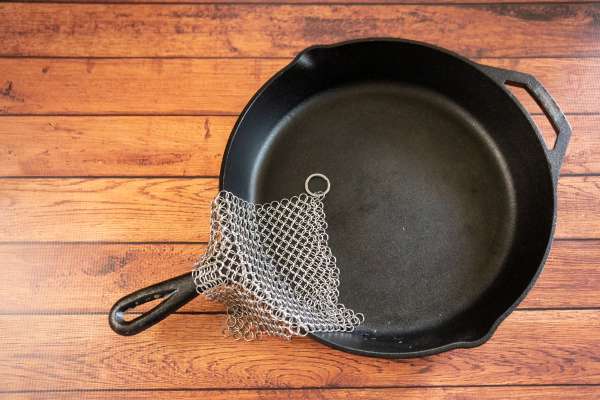
Get Clear Hard Anodized Cookware is an innovative and revolutionary technology that has taken the cookware industry by storm. This new technology has revolutionized the way we cook and has made it easier for us to prepare healthy and delicious meals at home. Clear cookware is a type of non-stick cookware that coat a layer of solid anodized aluminum, which makes it highly resistant to scratching, chipping, and corrosion.
Whether you want to fry eggs or sauté vegetables, this cookware will provide you with excellent results every time. It heats up quickly and evenly, ensuring that your food cooks perfectly without burning or sticking to the surface of the pan.
Cleaning Your Cookware Regularly

Cookware is a crucial part of every kitchen, and it is essential to keep it clean regularly. Proper cleaning helps maintain the quality of cookware, making it last longer and preventing contamination of food. The process may seem tedious, but with the right approach and materials, you can keep your cookware looking new.
To start the cleaning process, hand washes your pots and pans in warm water with mild soap immediately after use. This will prevent food from sticking and becoming more challenging to remove later on. For stubborn stains or burned-on food, soak the pot or pan in hot soapy water for a few hours before washing.
For non-stick cookware like Teflon-coated pans, avoid using abrasive sponges or harsh chemicals that can damage their surface. Instead, use soft sponges or brushes to clean them gently.
Different Types Of Hard Anodized Cookware
Hard anodized cookware has gained immense popularity over the years due to its durability and non-stick properties. It is made from aluminum that undergoes an electrochemical process to make it harder and more resistant to corrosion. There are different types of anodized cookware in the market, each with unique features.
The first type is pure anodized cookware. It is made solely from aluminum that has undergone the anodizing process. This type is lightweight, scratch-resistant, and distributes heat evenly. However, it can be prone to warping when exposed to high temperatures for extended periods.
The second type is stainless steel-clad anodized cookware. This type combines both stainless steel and hard anodized aluminum in its construction.
Why Should You Care About Cleaning It?
Keeping your environment clean is important for a variety of reasons. First, it helps to maintain a healthy living space. Dust, dirt, and other pollutants can accumulate in the air and on surfaces if left unchecked, making it harder to breathe and leading to potential health problems. Additionally, a clean environment can help reduce stress levels and improve overall mental well-being. When everything is neat and tidy, it can be easier to focus on tasks and feel more relaxed in the home or office.
Finally, taking care of your environment can also benefit those around you. Cleaning up after yourself reduces the amount of waste that goes into landfills and oceans while also reducing the amount of energy used in cleaning products. This helps keep our planet healthy for future generations. So not only does cleaning help keep you healthy and relaxed, but it also helps protect the planet for everyone’s benefit!
Discover the best methods for cleaning anodized aluminum cookware and keeping it in pristine condition. Find tips and tricks on how to effectively clean your hard anodized cookware without damaging it.
The Final thoughts
Cleaning hard anodized cookware is a straightforward process that can do with everyday items. By following the steps outlined above, you can remove any build-up on your cookware and keep it in great condition for years to come. Don’t forget to also use non-abrasive cleaners and avoid using metal scouring pads when you are cleaning. Doing so will help ensure that your cookware stays scratch-free and retains its shine.
